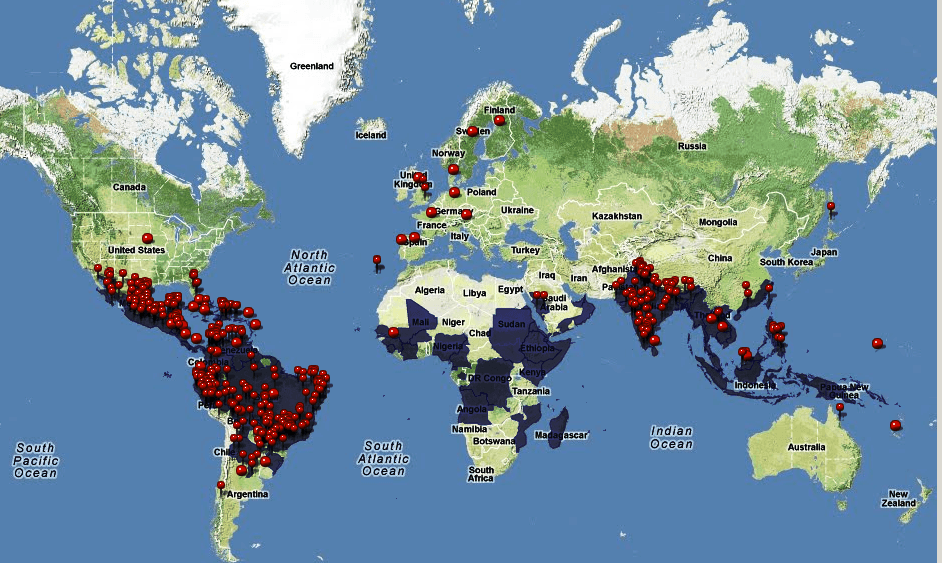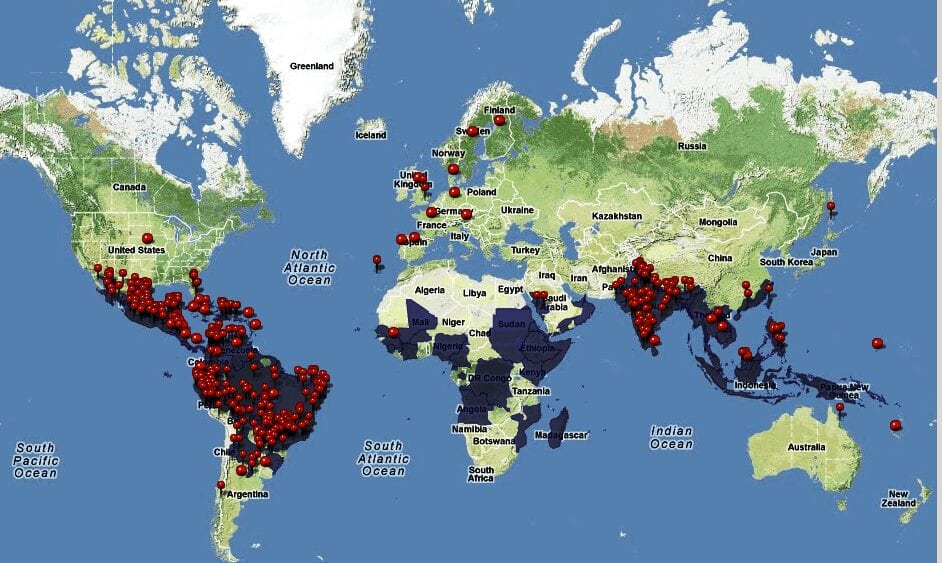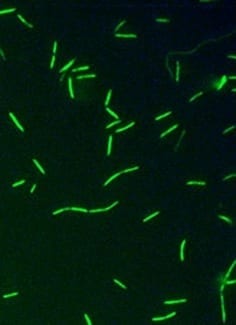
A painful mosquito-borne disease is spotted in the Western Hemisphere for first time, boosting U.S. risk
Given a choice between dengue fever or another mosquito-borne disease called chikungunya fever, choose dengue every time. Neither has an available vaccine or treatment, but chikungunya (pronounced chik-un-GUHN-ya) is far more severe – it literally means “that which bends up” because patients are often stooped over from debilitating joint pain.
If you’re a resident of the Caribbean island of St. Martin (or lucky enough to be traveling there for the holidays) you are now at risk of both. The island, roughly the size of Manhattan and located some 300 kilometers east of Puerto Rico, has the first confirmed outbreak of chikungunya in the Western Hemisphere.
As of late last week there were 26 laboratory-confirmed cases of the disease on the island, with over 100 total cases suspected. Chikungunya has been found in both the French and Dutch parts of the island. It has also spread to the nearby island of Martinque, which has two laboratory-confirmed cases. And representatives of the U.S. Centers for Disease Control and Prevention (CDC) say that the virus could spread to other Caribbean islands and the surrounding mainland areas in the coming months or years. The outbreak in such a prime spot for tourism also heightens the risk of a future outbreak in the United States.
Disease experts are not sure how the virus got to St. Martin. The patients in St. Martin had not recently left the island, so presumably the virus was locally acquired. The top theory is that a traveler contracted the disease in another region of the world and was then bitten by a local mosquito in St. Martin that went on to infect other people. Another, less likely option is that an infected mosquito traveled to St. Martin, perhaps as a stowaway on a ship or plane. “We know the area has the right mosquitoes to potentially transmit chikungunya, so you could question, ‘why not before now’ or ‘why not a year from now,’” says Erin Staples, an arboviral diseases expert at the CDC. “This just happened to be the right combination of factors,” such as ongoing transmission in other areas and an unlucky bite.
All it takes to spread chikungunya is for a female mosquito to feed twice, first engorging herself on an infected person’s blood and then later biting someone else. But unlike dengue, which is already common in the region and is transmitted via the same Aedes aegypti and Aedes albopictus mosquitoes, locals do not have any immune protection for chikungunya since it’s new to the area—meaning it could spread quickly.
The Latest on: Chikungunya fever
[google_news title=”” keyword=”Chikungunya fever” num_posts=”10″ blurb_length=”0″ show_thumb=”left”]
via Google News
The Latest on: Chikungunya fever
- Health officials issue warning over outbreaks of virus: 'Poses a significant risk'on May 7, 2024 at 6:30 pm
It's part of a concerning trend of increasing incidence rates for vector-borne diseases. Health officials issue warning over outbreaks of virus: 'Poses a significant risk' first appeared on The Cool ...
- Vaccine Partners Turn Rivals With First Shot for Advancing Viruson May 4, 2024 at 11:00 pm
Two European partners will soon be vying for dominance in a new battleground: vaccines to protect travelers against a painful viral illness transmitted by mosquitoes.
- Brazil to expand use of wolbachia bacteria against dengue feveron May 4, 2024 at 8:00 am
The Ministry of Health reports that Brazil is the pioneering nation to adopt this technology as a public policy initiative aimed at curbing dengue cases.
- Drive begins for chikungunya, dengue as cases rise to 5on May 3, 2024 at 10:28 pm
State health department in Dehradun initiates a campaign to combat rising chikungunya cases and prepare for the upcoming dengue season. Measures include daily inspections, larvicide spraying, and ...
- Scott O’Neillon May 2, 2024 at 5:11 am
The founder and CEO of the project, Scott O’Neill, aims for the Wolbachia-powered mosquitoes to spread to the swamps and puddles of the world to help stamp out dengue, which sickens 100 million people ...
- Valneva Gears Up To Launch The First Ever Chikungunya Virus Vaccineon May 1, 2024 at 3:00 am
Ixchiq is a single shot live attenuated vaccine for the prevention of chikungunya virus vaccine which provided immunity to over 98% of participants in a phase 3 clinical trial. The vaccine was well ...
- Uttarakhand Health Department notifies guidelines for dengue and chikungunya managementon April 30, 2024 at 9:00 pm
The Health Secretary said that all other departments also have an important role in the proper prevention and control of dengue and chikungunya disease. All the departments should carry out ...
- Immune cell interaction study unlocks novel treatment targets for chikungunya viruson April 29, 2024 at 12:15 pm
Researchers have long known that the body's immune system plays a critical role in fighting off chikungunya virus (CHIKV), but how exactly immune cells coordinate their response has been a ...
- Uttarakhand Health Department issues guidelines to prevent dengue and chikungunyaon April 29, 2024 at 9:26 am
Taking note of the dengue and chikungunya patients in the state, the Uttarakhand health department has issued guidelines to all the districts for their prevention and treatment. Guidelines of 20 ...
- Bavarian Nordic Initiates Rolling Submission of Biologics License Application with FDA for its Chikungunya Vaccine Candidateon April 29, 2024 at 6:41 am
Bavarian Nordic will submit additional data over the coming months, aiming to complete the BLA submission before the end of the first half of 2024 to support a potential FDA approval of the vaccine in ...
via Bing News











